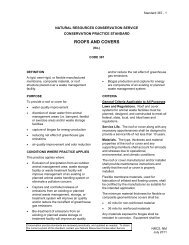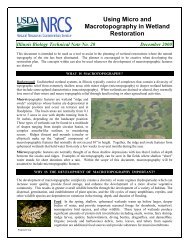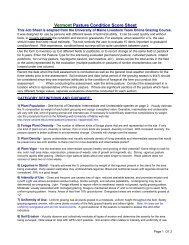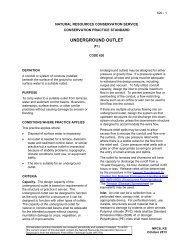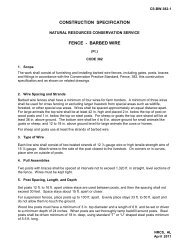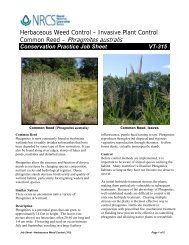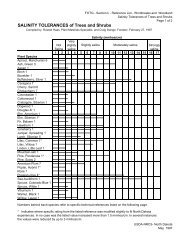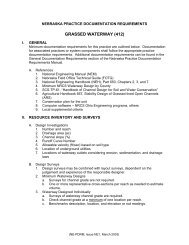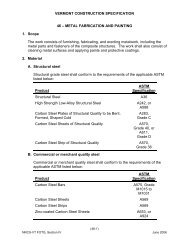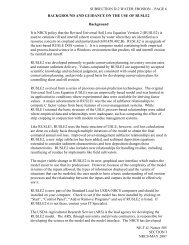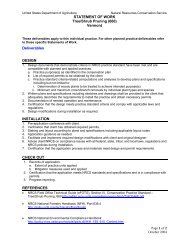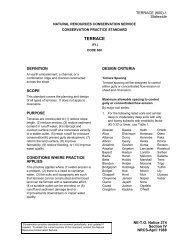The Use of Native Warm Season Grasses for Critical Area Stabilization
The Use of Native Warm Season Grasses for Critical Area Stabilization
The Use of Native Warm Season Grasses for Critical Area Stabilization
Create successful ePaper yourself
Turn your PDF publications into a flip-book with our unique Google optimized e-Paper software.
more expensive, and have relatively low seedling vigor compared to cool-seasongrasses, which results in a longer establishment period.<strong>The</strong>re are other reasons <strong>for</strong> reluctance to using warm season grasses. A warmseason grass seedling partitions initial energy into root development so seedlingsare vulnerable to competition and frost heave until the end <strong>of</strong> the second growingseason. <strong>The</strong> primary seeding window is limited to the early spring, but latefall/early winter seedings are a possible option on droughty soils with little weedcompetition. <strong>The</strong>re is no late summer/early fall seeding window as with coolseason grasses. Many <strong>of</strong> the warm season grasses produce chaffy seeds withlong awns, which do not efficiently flow through a conventional grass seeder. Asa result, specialized seed drills, which handle this type <strong>of</strong> seed, are needed, buthave not been commonly available in the Northeast. However, recent purchases<strong>of</strong> native grass seed drills by Soil Conservation Districts, grass-rootsenvironmental and wildlife organizations, and the U.S. Fish and Wildlife Servicehave greatly improved the availability <strong>of</strong> native grass drills in the Northeastregion.In general, warm season grasses have more exacting requirements <strong>for</strong>establishment than do cool season grasses. However, the benefits <strong>of</strong> utilizing thenative grasses far outweigh the potential difficulties encountered. This articleintends to minimize the concerns with establishing native warm season grasses<strong>for</strong> erosion control by presenting recommendations which have proven to besuccessful in the Northeast <strong>for</strong> the last eighteen years.Site SelectionSuitable planting sites <strong>for</strong> warm season grasses have the following attributes:1. Soil drainage class <strong>of</strong> moderately well drained or better, with no history<strong>of</strong> frost heave. Frost heave is less <strong>of</strong> a threat in states with longer and/or warmersummers than we have in New York, Vermont, New Hampshire, Maine,Massachusetts, and southeastern Canada. Even within the frost heave area,sandy or gravely soils rarely have this problem.2. Good control <strong>of</strong> perennial cool season grasses and <strong>for</strong>bs. Weedcompetition is typically much lower on critical area stabilization sites such asmined areas, sanitary landfill caps, and other disturbed areas due to poor soilconditions.3. At least a 100-day frost-free season, and 1600 growing degree days(corn <strong>for</strong>mula).



